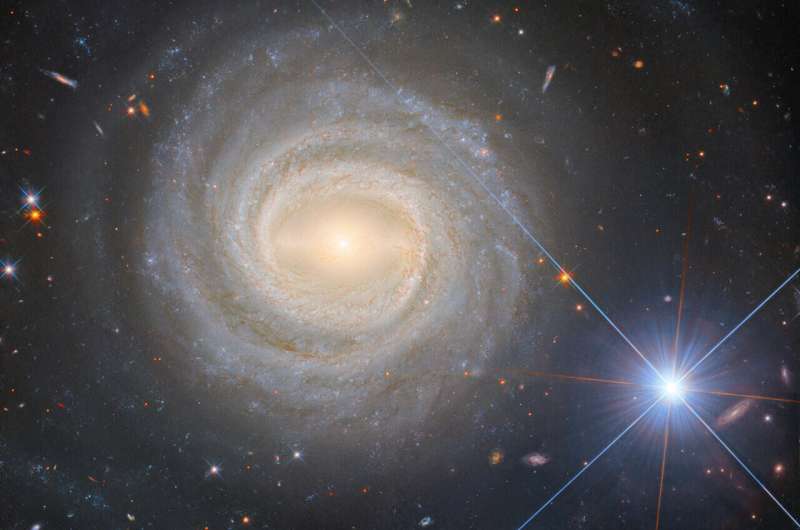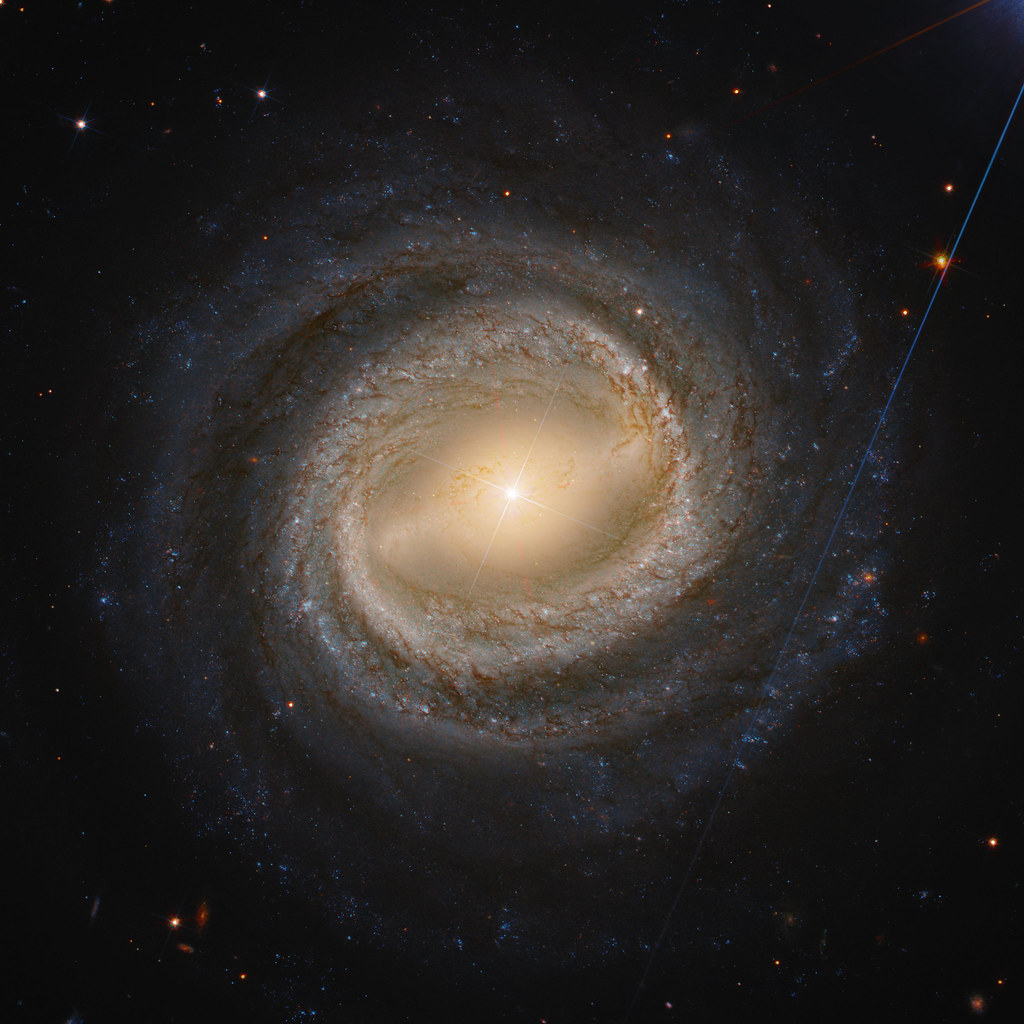AVAO wrote: ↑Mon Apr 22, 2024 7:05 pm
Hubble captures a bright galactic and stellar duo
phys.org | Original release 2024 April 22
While the focus of this image is the spiral galaxy NGC 3783, the eye is equally drawn to the very bright object in the lower right part of this image. This is the star HD 101274. The perspective in this image makes the star and the galaxy look like close companions, but this is an illusion. HD 101274 lies only about 1,530 light-years from Earth, it is about 85,000 times closer than NGC 3783. This explains how a single star can appear to outshine an entire galaxy!
NGC 3783 is a type-1 Seyfert galaxy, which is a galaxy with a bright central region. Hubble captures it in incredible detail, from its glowing central bar to its narrow, winding arms and the dust threaded through them, thanks to five separate images taken in different wavelengths of light. In fact, the galactic center is so bright that it exhibits diffraction spikes, normally only seen on stars such as HD 101274.
...
read more
...
zoom
...
download
GOTD4Y Jac
Nice galaxy, but I have to talk about the star, HD 101274. According to Simbad, this is a star of spectral class A0V. Its colors are a little bit red for its spectral class, 0.106, but there could be various reasons for that, such as a flattened shape of the star (common in A-type stars), and we might be viewing it equator-on. I don't think that the star is particularly dust-reddened (unless it is somehow self-reddened), in view of the crystal clarity of the background galaxies.
The distance to HD 101274 is some 1,530 light-years, and the luminosity of the star is ~40 times solar. That's normal.
Okay, now to what I wanted to say: I'm the owner of a fat old catalog, Sky Catalogue 2000.0, Volume 1, Stars to Magnitude 8.0.
This catalog lists some 50,000 stars, but HD 101274 is not one of them, because its V magnitude is 9.12. Interestingly, though, this catalog lists the most common types of magnitude 8 and brighter stars according to their spectral class. The most common of these stars are spectral class K, and there are 7638 stars of spectral class K listed in Sky Catalogue 2000.0, Volume 1, Stars to Magnitude 8.0. The second most common type of star listed in this catalog is spectral class A, and there are 4440 stars of spectral class A listed here.
That figures. And it says something about the nature and color of the Milky Way. Most of its light is going to come from its brightest stars, and these are, mainly, red giant stars of spectral class K. The second most important contributors to the light of the Milky Way are the main sequence A-type stars.
That doesn't mean that main sequence A-type stars are common in the Milky Way. Only 0.6% of all main sequence stars in our galaxy are spectral class A! But they make a difference because they are bright. No, not tremendously bright, of course, typically probably around 20 times solar, but since only 0.12003% of the main sequence stars in our galaxy are brighter than the Vegas and Siriuses and 98.6% are fainter, you can see that the contribution of the A stars is definitely not negligible!
https://en.wikipedia.org/wiki/Stellar_c ... sification
Galaxy NGC 3783 is cosying up to one of our own galaxy most common types of bright stars!
Ann




